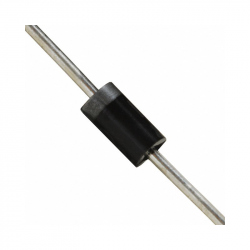Dupa plasarea solicitării de comandă, in sectiunea Istoric puteti vedea cate solicitări de comandă mai avem de procesat inaintea dumneavoastra
Program de lucru: Luni - Vineri 9:00 - 18:00, pauza 13:00 - 14:00.
Se efectueaza lucrari de mentenanta la site si pot aparea erori. In cazul in care intampinati erori va rugam sa reincercati mai tarziu.
Ridicarea personala este disponibila pentru comenzile achitate in avans. Se pot ridica dupa ce sunt pregatite.
Niciun produs
 Mărește
Mărește
Sursă Ridicătoare de Tensiune de 5V Pololu U3V50F5
0104110000045003
Produs nou
Această sursă generează o tensiune de ieșire de 5V, de la o intrare de minim 2.9V, permițând un curent de intrare de maxim 5A.
Alte produse ce pot apărea în imagini sunt folosite pentru prezentare și nu sunt incluse în pache
Acest produs nu mai este in stoc
- Scrie o recenzie
- Elimina acest produs din lista mea de favorite.
- Adauga acest produs la lista mea de favorite.
- Imprimă
Informații
Descriere și specificații:
Acest tip de sursă generează tensiuni mai mari decât tensiunea de ieșire și are o eficiență cuprinsă între 80% și 95%. Curentul disponibil la ieșire variază în funcție de tensiunile de intrare și ieșire și de eficiență. Curentul de scurgere în gol depinde de diferența între intrare și ieșire, când aceasta este foarte mică, poate fi mai mic de 1mA. Pinul ENABLE poate fi utilizat pentru a pune plăcuța într-un mod low-power ce poate reduce curentul de scurgere la aproximativ 20 µA per volt la VIN.
Dispune de protecție la inversarea alimentării, supracurent, supraîncălzire (se închide la aprox. 165°C) și regulator ce se oprește dacă tensiunea de intrare scade sub 2.5V.
- Tensiune de intrare: de la 2.9V la VOUT;
- Ieșire fixă de 5V cu acuratețe 4%;
- Curent de intrare până la 5A;
- Protecție la inversarea alimentării, supracurent, supraîncălzire și regulator ce se oprește dacă tensiunea de intrare scade sub 2.5V;
- Dimensiuni: 48 × 15 × 10.5 mm.
Link-uri utile:
Recenzii
Clienții care au cumpărat acest produs au mai cumpărat:
-

Modul cu Buton
Modul cu buton de tip push button.
$0.29
-

Driver de...
Driver-ul TB6612FNG poate controla unul sau...
$6.00
-

Suport...
Suport pentru Baterii CR2025/2032
$0.36
-

Suport de...
Suport de Baterii 2x18650
$1.68
-

Voltmetru de...
Voltmetru de Panou Roșu 0-30 V ce prezintă o...
$2.40
-

Soclu /...
Adaptor SOIC8, SOP8 la DIP8.
$3.12
-

Modul...
Modul adaptor micro usb utilizat pentru a...
$0.41
-

Sursă în...
Sursă în comutație ridicătoare utilă pentru...
$4.80
-

Dioda 1N4001
Curentul: 1 A Tensiune inversa: 50 V
$0.12
-

Termocuplu...
Termocuplu Tip K M6 (1 m)
$3.60










